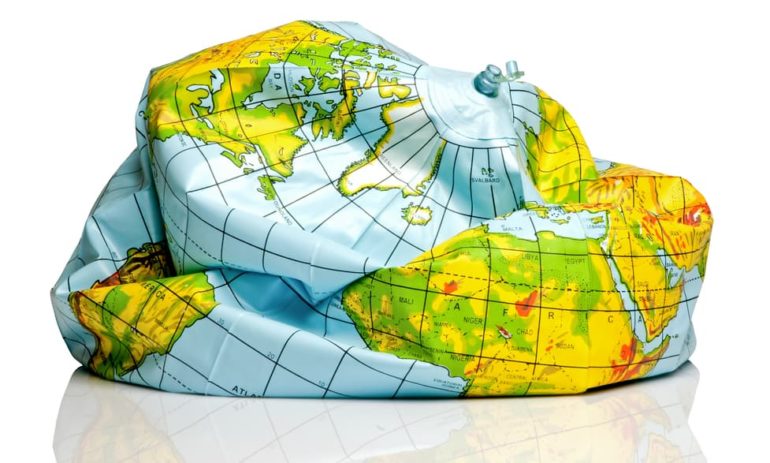Persistent deflation—a decrease in the general price level of consumer goods—can cause stagnation in the growth of, and deter investment in, the food sector. Many national economies are in decline: 15 of the 19 countries in the Eurozone are in deflation, and in China, the inflation rate is only 0.8 percent. Even countries growing at a rate above 2 percent—such as the United States, Canada, and Great Britain—have inflation rates that are well below targets. Due to the volume of international food trade, deflation in just a few nations can affect food prices worldwide, causing food insecurity.
Agriculture depends on cheap energy, which ties overall food prices to global energy prices. The United Nations Food and Agriculture Organization (FAO) indicates price of oil as one of its four market predictors for food prices. In 2014, a barrel of crude oil cost US$110; today, the same barrel goes for US$60, representing a 45 percent price decrease. Cheaper gasoline lowers transportation and manufacturing costs, dragging down the overall cost of food. CEOs of oil companies such as BP and Centrica expect lower oil prices to persist for the foreseeable future.
Falling food prices are harmful for businesses. Food is an inelastic commodity, meaning that consumers don’t buy much more when prices drop. The FAO’s biannual Food Price Index reveals that prices in 2015 have continued to decrease for most foods, reaching a four-year low. In the United Kingdom, food prices were down 0.4 percent in February, signaling a change of trend after rising throughout much of 2014. Falling commodity prices in Europe have created a price war between supermarkets. According to Andy Haldane, Bank of England chief economist, “measured expectations suggest that lower inflation is expected to persist. To the extent this [has] affected wage and price-setting, those expectations could become self-fulfilling.” While low food prices may seem attractive to consumers, the true costs of cheap food include social and environmental externalities.
Deflation makes it more difficult for economies to recover from national debt or high unemployment rates. According to a study by the McKinsey Global Institute, all major economies have higher levels of debt today than they did in 2007. Despite precipitating lower food prices at the retail level, deflation also leads to lower incomes for consumers and decreased ability to pay for consumer goods. Investment and job growth are critical for healthy national economies, and constrained consumers turn to the cheapest options—junk food—when budgets are limited.
For countries that import a high proportion of food relative to other goods, depreciation of national currency makes the cost of food imports more expensive; this impacts food access for low-income populations in these countries. In Russia, a 14 percent price increase in basic foodstuffs in 2014 led to government intervention, freezing prices on more than 20 necessary grocery items to mitigate food insecurity. Skyrocketing prices are the result of depreciation of the ruble in the past year, an indirect impact of deflation.
Japan is in a similar situation. “With the weaker yen, a lot of foodstuffs in stores have increased quite a bit, so consumers’ expectations for inflation have risen,” says Fumio Nakakubo, the regional chief investment officer for Japan at the Union Bank of Switzerland’s wealth management unit. In this way, deflation actually facilitates higher food prices in importing countries, due to currency depreciation.
Healthy global economies that invest in sustainable food entrepreneurship are vital to the future of the food sector. Deflation reveals the dependence of the current global food system on cheap oil and other non-renewable resources. By investing in sustainable farming and food businesses that use alternative sources of energy and sell locally rather than on the global market, the public and private sectors can work together to ensure more stable food prices and resilient marketplaces.















